In this week’s Star Trek: Discovery episode, we find Book struggling with loss, Adira and Gray sharing the excitement and anxiety that comes with change, Tilly working on herself, and both the Federation and its galactic neighbors trying to understand the enormous gravitational anomaly in their midst.
A few days have passed since the end of “Kobayashi Maru,” and a shattered Book (David Ajala) has spent that time in seclusion aboard his ship, examining and reexamining every bit of information he has — in an attempt to understand exactly what he witnessed in the skies above Kwejian in the moments before its destruction.
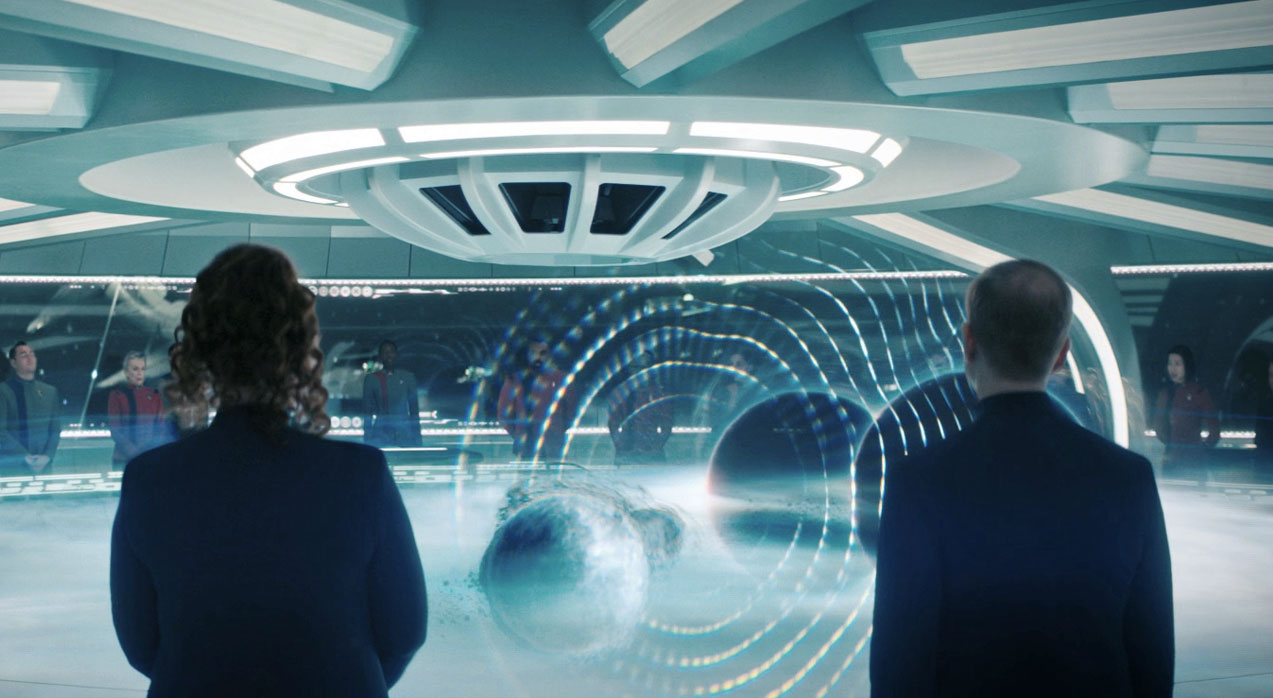
It’s clear that he’s given a statement at some point because Discovery’s senior officers are well prepared to brief the Federation’s upper echelons — as well as the leaders of several non-Federation worlds — but otherwise he’s not talking.
The briefing is quick, economical, and surprisingly unbureaucratic: the gravitational anomaly is huge, moving, and poses a threat to any system in its path. It’s also poorly understood; after President T’Rina (Tara Rosling) graciously offers the services of the Ni’Var Science Institute (neé Vulcan Science Academy), Discovery is sent out to collect some much-needed data.
Before the central action of the episode gets underway, we have the chance to catch up with Saru (Doug Jones), who’s back aboard and back in uniform. Culber may be the ship’s resident mental health professional — more on that later — but Saru continues to be a person people seek out for counsel.
By no means did I dislike Saru’s turn as captain last season, but the dynamic between Michael Burnham (Sonequa Martin-Green) as captain and “Mister Saru” as her first officer and advisor feels right in a way that the opposite never did for me. I’m happy to see him back.
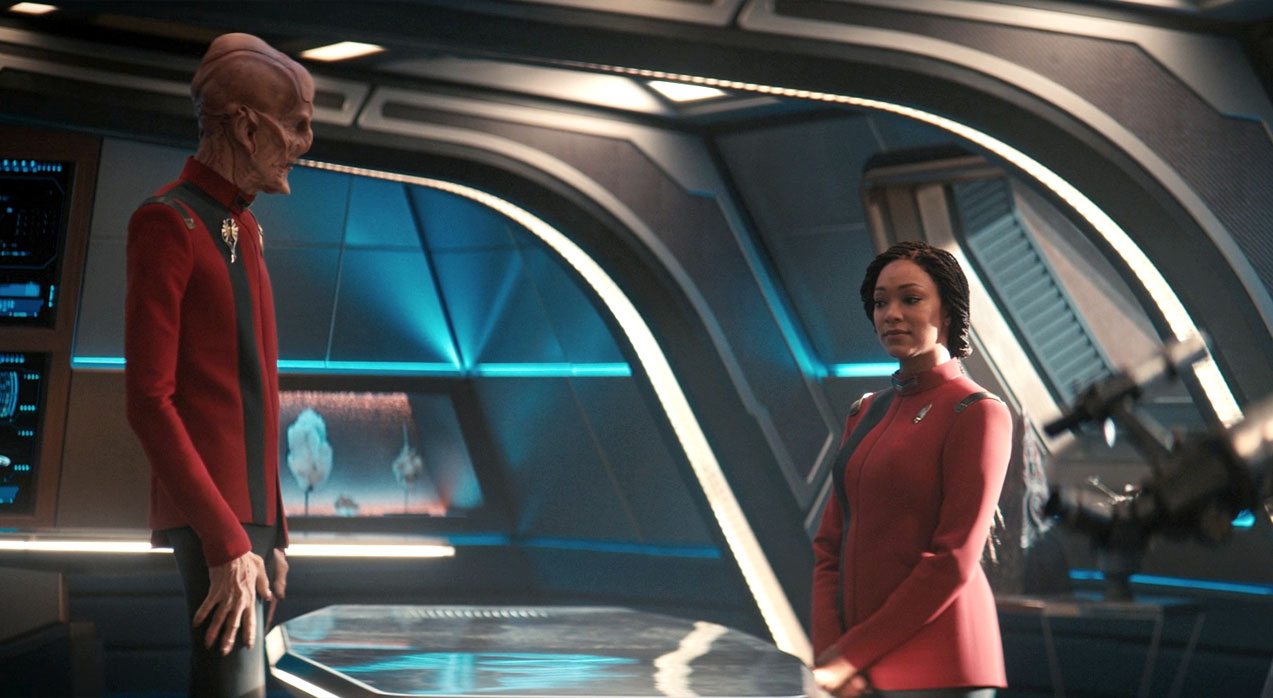
Speaking of getting someone back, we finally get a much-awaiting update on how exactly Discovery plans to resurrect Gray (Ian Alexander) from Trill ‘ghost’ to physical being: by having Dr. Culber (Wilson Cruz) catch up on the events of Star Trek: Picard!
Using the work of one Dr. Alton Soong, Gray’s new body will be a ‘golem’ synthetic — a biological construct — just like Jean-Luc Picard after the events of “Et in Arcada Ego, Part 2.” Gray’s new body will exactly mimic his original, minus one pesky mole; like Picard, Gray will now age normally despite the synthetic design of his new body.
This exchange also allows the writers to play a bit with Discovery’s unusual place in the Star Trek timeline. Culber mentions that one of the few success stories was a Starfleet admiral named… Picard, was it? He stumbles a bit on the name, because clearly he’d never heard it before as a man who comes from a century before Picard’s name became famous.
What a simple and effective way to underscore that what should have been Discovery’s future is now its distant history, and that this time-displaced crew is still learning things that natives to the 32nd century — and viewers like us — take as common historical knowledge. It’s a Lower Decks-esque wink and nod to its place in canon, but in Discovery’s style and tone.
It also serves to address fan concerns that death no longer means much after the Soong-built golem resurrection of Admiral Picard: Culber notes that the process rarely worked after Picard’s “rebirth,” and that people just gave up on it because of the low success rate. Soong’s said in “Et in Arcadia Ego, Part 1” that he just did bodies — Bruce Maddox was the “substrates man,” meaning the real expert to keep the process working was gone.
Gray’s experience surviving one consciousness transfer already makes him uniquely suited for this attempt, despite the past historical failures — and the bit about ‘customizing’ the new body by removing an unwanted mole is a nice moment on the desire to ‘correct’ ones own body during transgender transitioning. but more on this is sure to follow in the next few episodes.

Now, back to the action! Discovery catches up with the titular anomaly, and finds it has a thick cloud of debris surrounding it — which means someone has to fly inside it to get the needed sensor data.
Book’s ship is the obvious vehicle of choice, but Burnham’s not so sure Book is the best person to pilot it. He pushes back, though, and while there’s really nothing she can do to stop him, she can at least make sure he’s as safe as possible flying a mission that would be dangerous under the best of circumstances — and with Book’s compromised emotional state it’s doubly so.
Eventually it’s decided that his ship be tethered to Discovery — thank you, programmable matter! — but he’s got to take Paul Stamets (Anthony Rapp) along with him to manage the sensor work. Before they lose both spore drive pilots in one dangerous mission, it’s decided that Stamets will be going along as a holographic projection while his body stays safe back on the ship.
Neither man is particularly happy about this team-up, between Book’s emotional state and Stamets’ discomfort being confined to a small ship with a man he’s barely spoken to… plus the fact that each is under the impression that the other hates them.
Once the mission gets underway, things get dicey fast aboard both Book’s ship and back on Discovery. Rough gravitational waves begin to rock the ship, tossing crew from their stations and slamming them down to the deck plates as the artificial gravity systems give out.
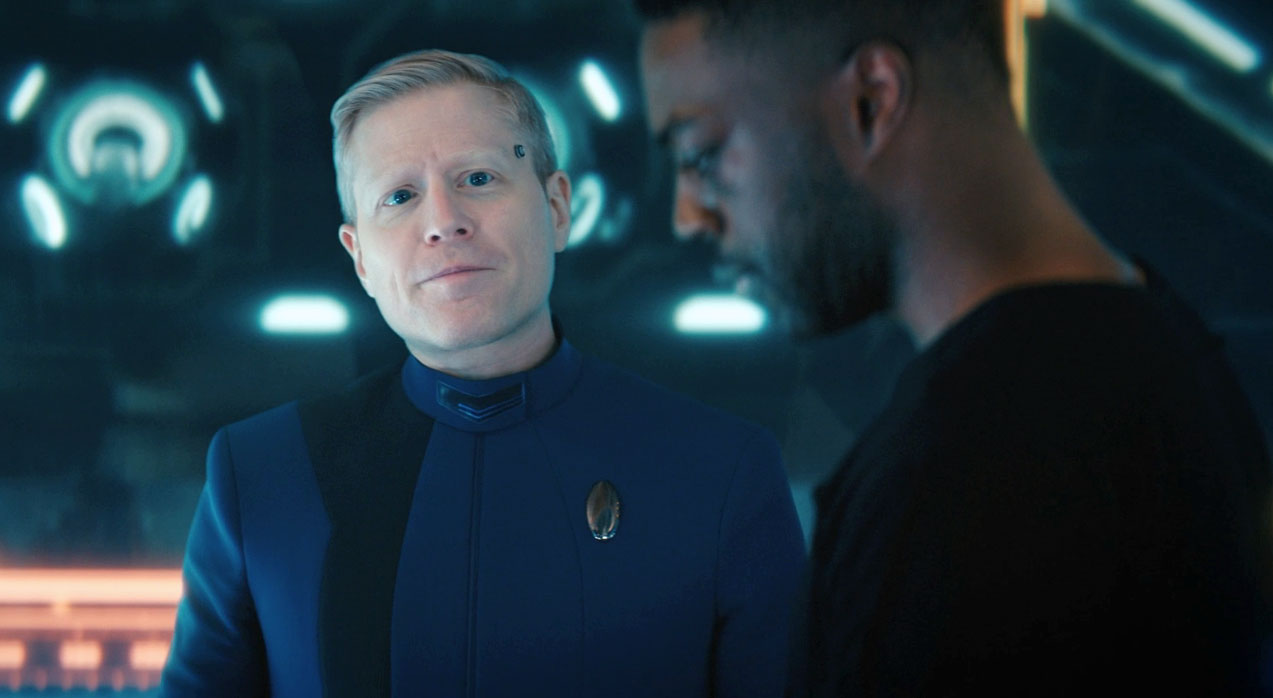
While all this is going on, Lt. Tilly (Mary Wiseman) and Ensign Tal (Blu del Barrio) try to determine both the cause and frequency of the gravitational waves.
Tilly, as both the ranking officer and a person trying to perform complex analysis in a very short period of time, is curt with her orders to Adira — who bristles at someone checking their work — but nothing that seemed to me to be unprofessional or unexpected given the circumstances.
Culber, who is on the bridge providing medical care to various injured crewmembers, thinks differently and decides that right in the middle of an emergency, it’s a good time to ask Tilly to talk about her feelings regarding last week’s incident aboard Deep Space Repair Beta 6.
Meanwhile, the pair aboard Book’s ship start up another heart-to-heart conversation while simultaneously dealing with emergency repairs, navigational problems… and the general attention-grabbing task of trying not to be killed by space debris and a gravitational anomaly that’s powerful enough to chew through a planet.
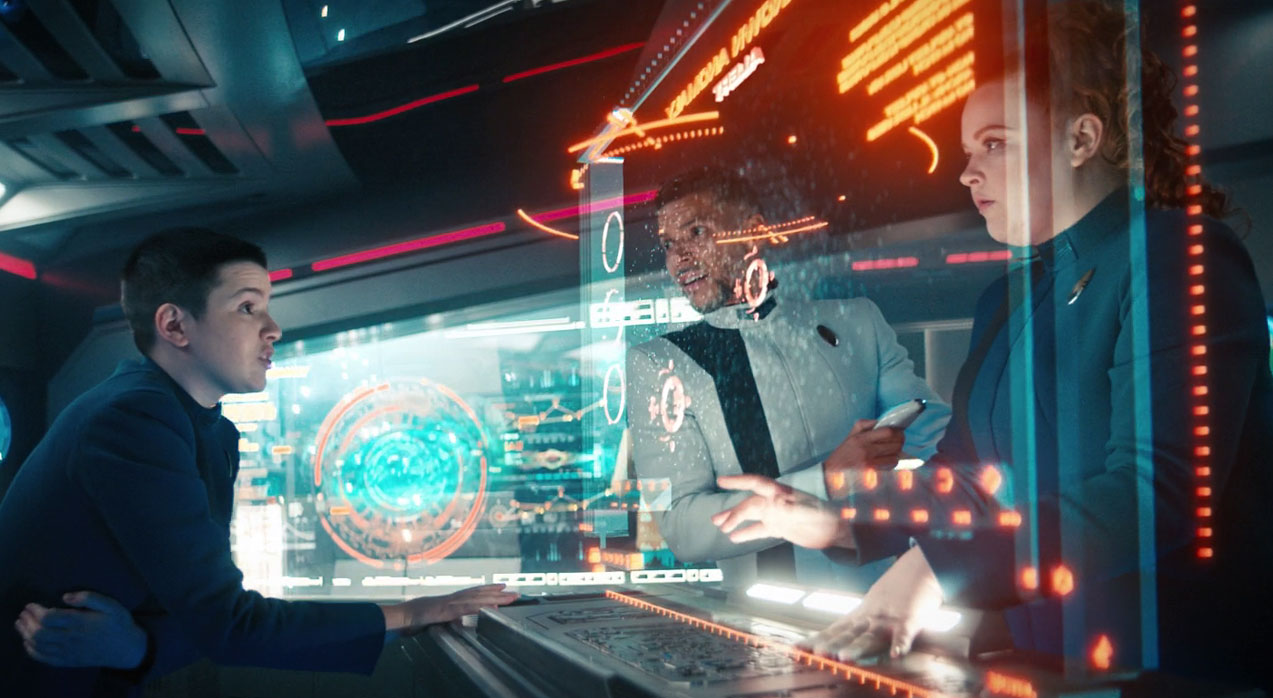
Of course I want these characters to work through whatever’s going on between them — but look, this isn’t the best time! As with Burnham questioning the president in “Kobayashi Maru,” I have to say I don’t understand Discovery’s habit of writing intimate character moments in the middle of intense action sequences.
Perhaps the show is worried that with far future technology that’s so advanced and powerful to essentially be magic, the action sequences will seem sterile, or overly slick, or simply won’t have high enough stakes, so they attempt to ground them with the emotions of the characters. If indeed this is the concern, it’s a valid one — not just for Discovery but for any genre fiction that can, by nature of the universe it inhabits, easily “magic” itself out of problems.
But if the goal is to inject small human moments into scenes with grand and impersonal technology to make them feel warmer and more real, it’s unfortunately having the opposite effect for me. There’s something that feels so unnatural about the construction and timing of these conversations and the fact that no one — other than maybe the sorely-missed Jett Reno — ever snaps back with a “Hey, can we do this later?!” that it makes me hyper-aware of the writing underneath the moment.

Anyway…. Tilly and Adira figure out that the gravitational waves are only going to keep coming, and that Discovery won’t be able to withstand many more of them. Because Stamets needs more time to collect data from the anomaly, Burnham reluctantly agrees to disconnect the tether and move the ship to a safer distance.
By the time Stamets and Book are ready to leave the anomaly, Book’s navigation has been knocked out, his ship is quickly losing power, and — seeing flashbacks to his final moments on Kwejian with his brother and nephew — Book himself is losing the will to return to safety. The one thing that keeps him from giving up entirely is the need to physically get the data back to Discovery, as the vital information can’t be transmitted.
With some quick thinking from Tilly, who figures out the form and frequency of the gravitational waves, and Bryce (Ronnie Rowe, Jr.) who we learn is an avid kite surfer — check the “learn something about the bridge crew” box — they plan to have Book “surf” a gravitational wave out of the anomaly.
Just one problem: Book’s ship is unable to perform the navigational calculations itself so the team back aboard Discovery is going to have to guide him through it.
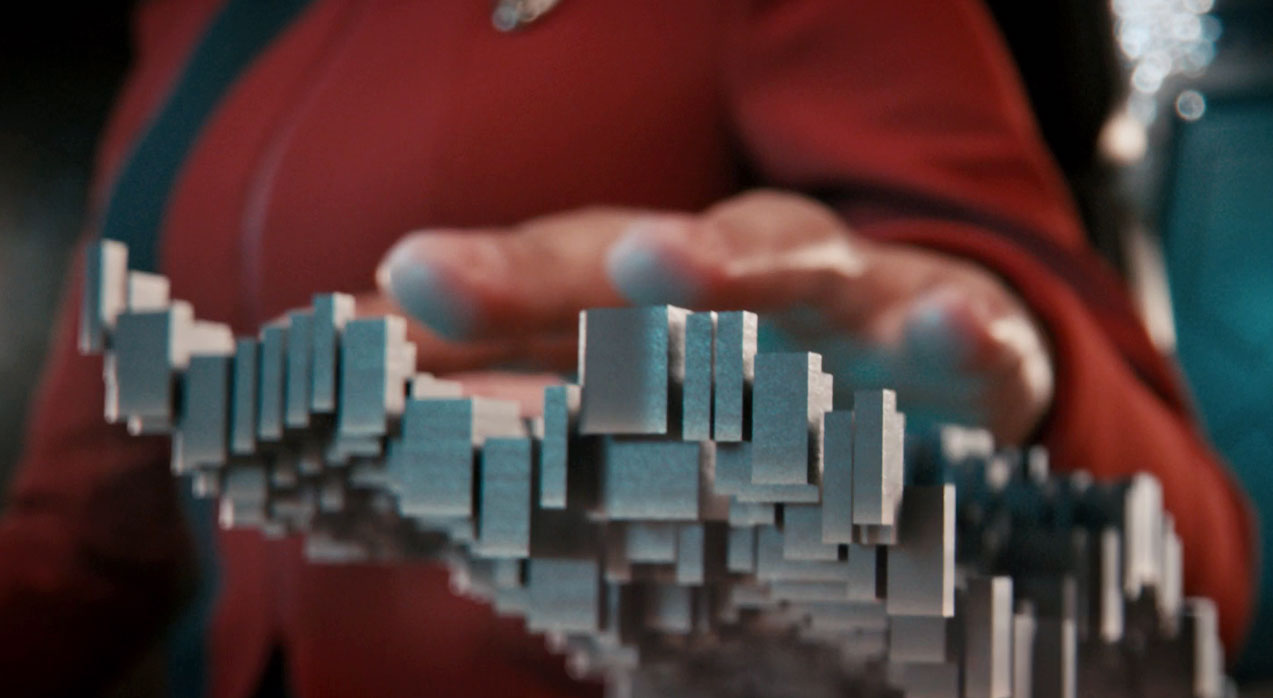
Here’s where things get a little wobbly for me. Instead of merely having the ship’s computer — which is already running all the calculations for the waveform — simply do the countdown for Book, Burnham decides to have the 2D visualization turned into a 3D model to be played on the programmable matter console on the captain’s chair. The idea is that she will physically feel the waves and intuit the patterns and tell Book when to accelerate so he can catch the crest.
From a character perspective, I get it — Book is having to let himself trust someone else for the first time since his planet was destroyed. This is especially apparent when Book hesitates after receiving Burnham’s “Go!” misses the first wave, and needs a supportive pep talk from her in the few minutes before the next wave.
But from a practical perspective, it seemed so unnecessary and imprecise that instead of being drawn into the drama of the scene I was busy thinking back over the dialogue to see if I’d misunderstood something about the plan — though in the end it works, and Book flies home with the sensor data intact.
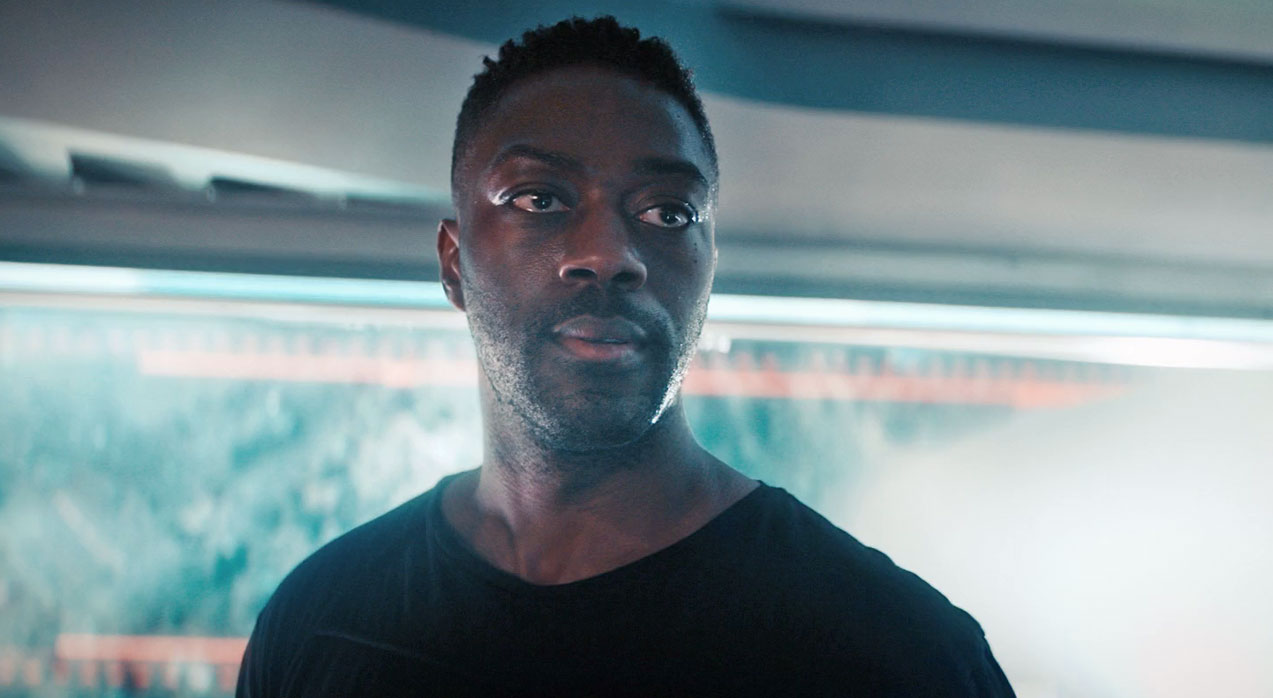
Of course, that hasn’t saved the day: before the credits roll, we learn from Tilly that the gravitational anomaly can move at random — which means it can’t easily be avoided, and is a threat to any planet or people anywhere. Where will the anomaly show up next, and is its erratic motion a sign of intent?
I’m starting to wonder if maybe it’s something like the Planet Killer from “Doomsday Machine,” or the Cetacean probe from Star Trek IV… or V’Ger, which was also huge, immensely powerful, and surrounded by a debris field that couldn’t be penetrated by sensors. Hmm…
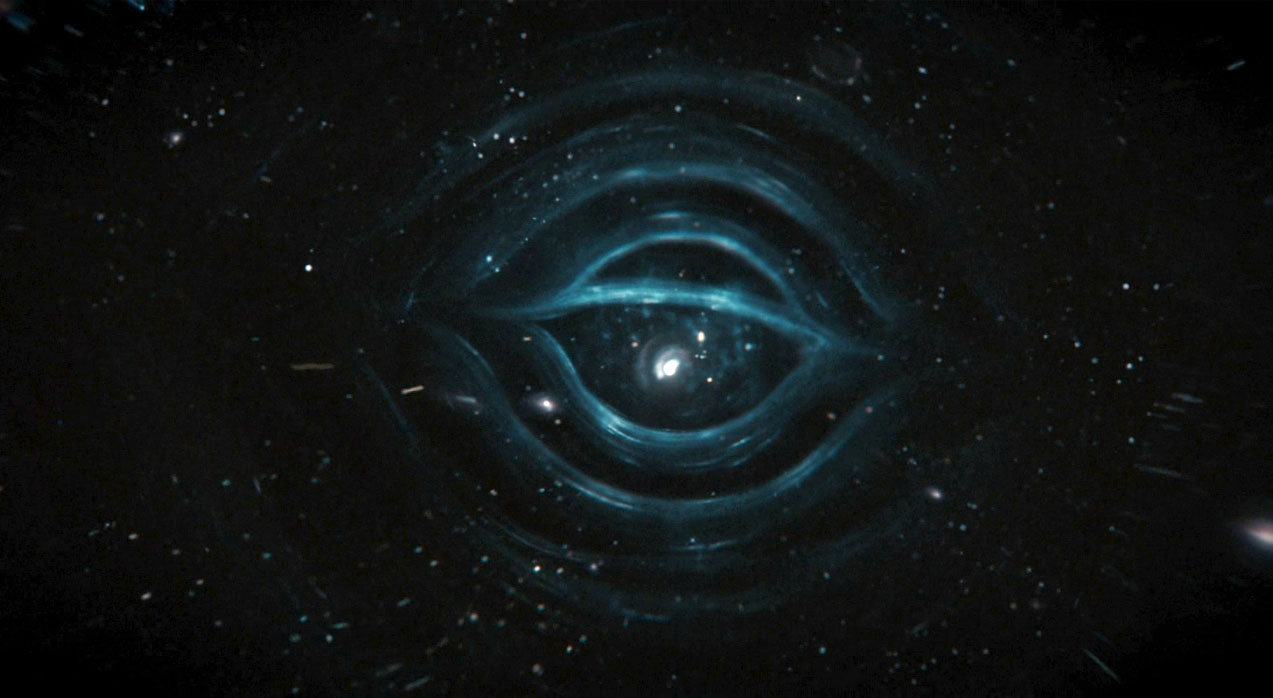
OBSERVATION LOUNGE
- Sara Mitich’s (Nilsson) blonde wig looks a little bit better this week. Thank you.
- The opening credits sequence comes twelve and a half minutes into the episode’s 49 minute runtime. If this isn’t a record for longest open, it’s surely close.
- Opposite his combadge, Saru sports a large black and gold crest that’s a “Kelpien symbol for community and service” that advertises his status as a councilmember in his village.
- Discovery, of course, is not the first Star Trek ship to have two captains serving on a ship’s bridge; Spock held the rank of Captain from Star Trek II: The Wrath of Khan forward.
- When Discovery jumps to the anomaly’s location, we get a refreshing change of view as the camera stays aligned to the ship — and the galaxy outside twists around it during the spore drive burst.
- If Stamets could be fully-tangible as a hologram, even through the worst of their flight turbulence, why couldn’t Book fly his ship remotely in the same manner — allowing the crew to protect both spore drive pilots?
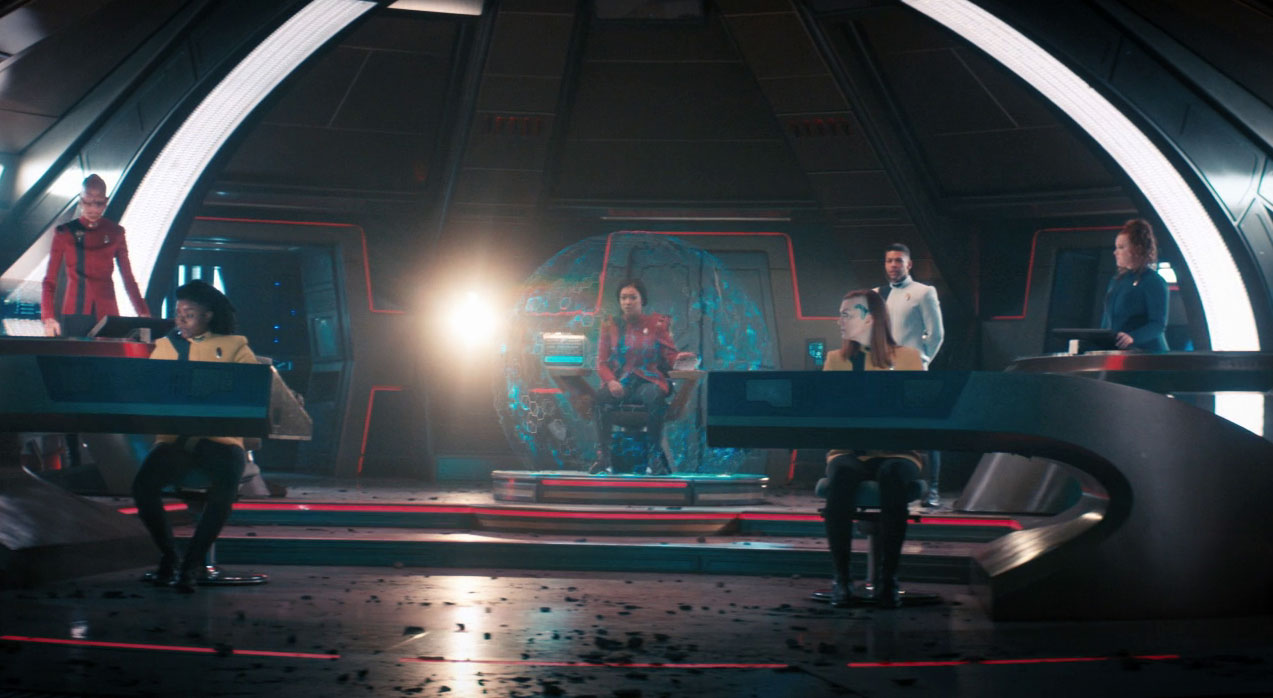
- In an nice upgrade, a sound-dampening force field can now be projected around the Discovery captain’s chair when a private communication channel is active.
- An alarming amount of fire repeatedly shoots from ports on the bridge walls during this episode’s chaos: are there propane lines running through there? Whatever the explanation, it sounds like they should get that checked out next time they fly past the Archer Spacedock — it’s one thing to have rocks explode out of consoles in a time-honored Trek tradition, but this takes things to a whole new level. (Maybe Discovery got the Truckasaurus upgrade package installed during the refit.)
- Discovery’s refit included at least one holodeck (or “holo,” as it’s awkwardly named) — and like Picard’s stateroom aboard La Sirena, Burnham has it set up right in her quarters. (I look forward to some Victorian romances and Old West action!)
- The slow march towards “Calypso” continues, as Discovery’s self-aware sphere-data-driven computer has named herself Zora (Annabelle Wallis) in the months since Saru’s departure.
- According to Sonequa Martin-Green in last week’s The Ready Room, she performed Burnham’s wirework zero-gravity scenes just 12 weeks after the birth of her second child — a feat that requires some serious core strength.

The final 10 minutes or so of “Anomaly” are, I think, the best of the episode and also emblematic of what Season 4 has so far been most successful with: quieter character moments that give people the space to discuss their feelings, fears, concerns, and hopes with one another — without asking them to juggle the emotional and the action-packed simultaneously.
Stamets and Book learn that each has misunderstood the other and that they have no reason for antagonism; Adira shares their uncertainties with Gray, that they’re happy for his happiness and excited that he’ll finally get to be seen and heard and be an independent person again, but anxious about the possible dangers of the transfer to his new body; Tilly tells Culber of her own uncertainties and asks if he’ll see her professionally, as a therapist; and Book finally allows himself to feel his grief and open himself up to Burnham’s comfort and love.

That Discovery is so willing to give time to these moments makes the fact that they keep also crowding them into action sequences even stranger. Regardless, I’m happy that so far, Season 4 is being generous with breathing room in the story that had been lacking at times in previous seasons.
![]()
Star Trek: Discovery returns with “Choose to Live” on December 2 on Paramount+ in the United States, and on CTV Sci Fi Channel and Crave in Canada. Outside of North America, the series is available on Paramount+ and on Pluto TV in select international locations.
